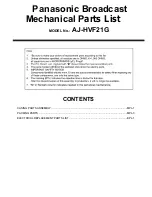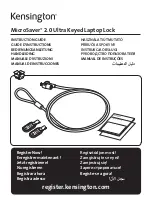
SERVICE MANUAL
NOISE CANCELING
HEADPHONES
US Model
Canadian Model
AEP Model
UK Model
E Model
Tourist Model
SPECIFICATIONS
MDR-NC50
9-879-314-04
2006H05-1
© 2006.08
Sony Corporation
Personal Audio Division
Published by Sony Techno Create Corporation
Note on chip component replacement
•
Never reuse a disconnected chip componet
•
Notice that the minus side of a teamtalum capacitor may be damaged by
heat
General
Type
Dynamic, closed
Driver units
40 mm, dome type
Power handling capacity
100 mW
Impedance
40
Ω
at 1 kHz (when the power is on)
100
Ω
at 1 kHz (when the power is off)
Sensitivity
102 dB/mW (when the power is on)
100 dB/mW (when the power is off)
Frequency response
14
−
22,000 Hz
Frequency range of active noise attenuation
40
−
1,500 Hz, more than 14 dB at 300 Hz
Power source
DC 1.5 V, 1
×
R03 (size AAA) battery
Mass
Approx. 290 g (11 oz) including battery
Supplied accessories
Connecting cord (0.5 m, gold-plated stereo mini plug (1) (Tourist only),
1.5 m, gold plated L type stereo mini plug (1)), R03 (size AAA) dry
battery (1) (Tourist only), Carrying case (1), Plug adaptor for in-flight
use* (single/dual) (1), Gold-plated unimatch plug adaptor (stereo phone
plug
y
stereo mini jack) (1), Operating Instructions (1)
* May not be compatible with some in-flight music services.
Design and specifications are subject to change without notice.
Battery
Sony alkaline LR03/AM-4 (N)
(size AAA) battery
Sony manganese R03/ UM-4
(NU) (size AAA) battery
Approx. hours
*
1
30 hours*
2
15 hours*
2
Battery life
*
1
1 kHz, 1 mW + 1 mW input
*
2
Time stated above may vary, depending on the temperature or conditions of use.
When to replace the battery
Replace the battery with a new one when the POWER indicator dims.
The noise canceling feature may not work correctly if battery power is low.
UNLEADED SOLDER
Boards requiring use of unleaded solder are printed with the lead-
free mark (LF) indicating the solder contains no lead.
(Caution: Some printed circuit boards may not come printed with
the lead free mark due to their particular size)
: LEAD FREE MARK
Unleaded solder has the following characteristics.
•
Unleaded solder melts at a temperature about 40 ˚C higher
than ordinary solder.
Ordinary soldering irons can be used but the iron tip has to be
applied to the solder joint for a slightly longer time.
Soldering irons using a temperature regulator should be set to
about 350 ˚C.
Caution: The printed pattern (copper foil) may peel away if
the heated tip is applied for too long, so be careful!
•
Strong viscosity
Unleaded solder is more viscou-s (sticky, less prone to flow)
than ordinary solder so use caution not to let solder bridges
occur such as on IC pins, etc.
•
Usable with ordinary solder
It is best to use only unleaded solder but unleaded solder may
also be added to ordinary solder.
Summary of Contents for MDR NC50
Page 10: ...10 MDR NC50 MEMO ...

































